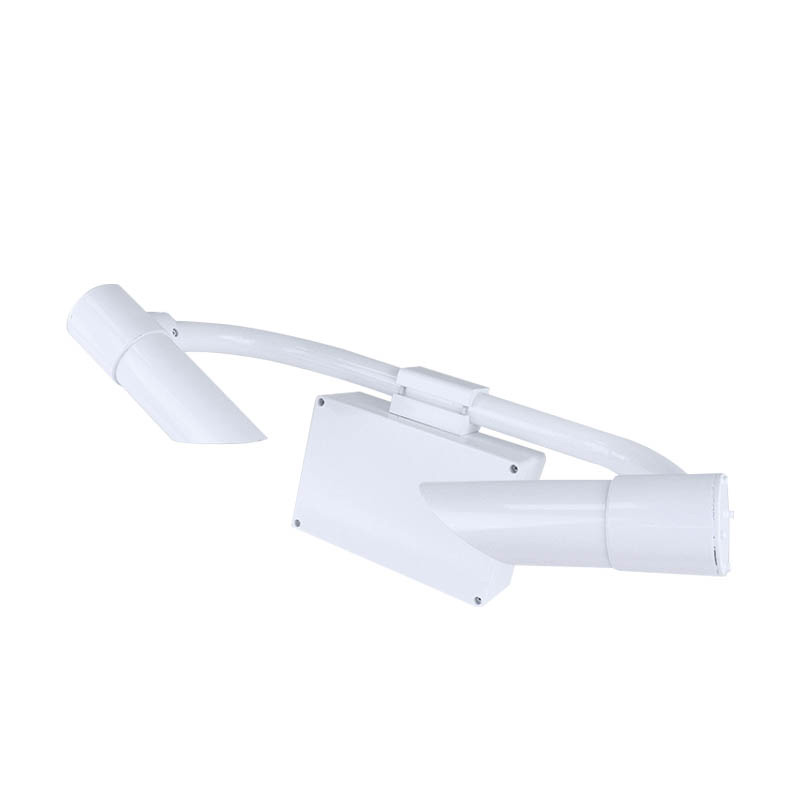Tianyi Sensor IOT Technology Co., Ltd
Sales Manager:Ms. Emily Wang
Cel,Whatsapp,Wechat:+86 15898932201
Email:info@fengtutec.com
Add:No. 155 Optoelectronic Industry Accelerator, Gaoxin District, Weifang, Shandong, China

Sales Manager:Ms. Emily Wang
Cel,Whatsapp,Wechat:+86 15898932201
Email:info@fengtutec.com
Add:No. 155 Optoelectronic Industry Accelerator, Gaoxin District, Weifang, Shandong, China

Model:FT-N50
Brand:tianyi
1.Introduction to Visibility and Present Weather Sensor Products
Visibility and Present Weather Sensor uses forward scatter to measure visibility and can identify weather phenomena such as fog, rain, snow, mixed precipitation, and clear weather.The N50 Visibility and Present Weather Sensor uses forward scattering method to measure the total extinction coefficient of the air, and then calculates the current visibility, which is widely used in road traffic, meteorological and other industries.
2.Visibility and Present Weather Sensor technical features
1.The instrument shell is high-quality aluminum material, and is sprayed after anodization.The whole machine has excellent waterproof, dustproof and collision-proof performance;
2.The instrument transmitting and receiving lenses are designed downward to greatly reduce interference with sunlight and other miscellaneous light;
3.Weather phenomenon identification, which can identify weather phenomena such as fog, rain, snow, mixed precipitation, sunshine, etc., with a high recognition rate;
4.Built-in watchdog circuit to ensure reliable and stable outdoor operation for a long time;
5.The instrument communication and power interfaces both contain lightning protection designs, which greatly reduce lightning strikes and static damage;
6.12~24V wide voltage power supply, total power is about 1W, and the power consumption is extremely low.It can be powered by solar panels, batteries, etc.for a long time;
7.The digital interface uses RS485 or RS232, the standard MODBUS protocol, and there is no need for protocol adaptation;
8.The instrument can output 15s, 1min, and 10min visibility values, and can be read directly without configuration, making it more flexible to use.
3.Visibility and Present Weather Sensor implementation standards
QX/T 536-2020 Forward scattering visibility meter test method
4.Visibility and Present Weather Sensor Technical Indicators
| Main parameters | Parameter range | Resolution | error |
| Range | 50km | 1m | ≤2km ±2%2km~10km ±5%>10km ±10% |
| Repeatability | ≤4% | ||
| Weather phenomena | Fog, rain, snow, mixed precipitation, sunny | ||
| Weather phenomenon recognition rate | ≥95% | ||
| Operating temperature | -40~60℃ | ||
| Working humidity | 0~100%RH | ||
| Working power supply | 12~24V | ||
| Power consumption | 1W | ||
| size | 610x230x360mm (Length x Width x Height) | ||
| weight | ≤10kg | ||
5.Visibility and Present Weather Sensor installation instructions
1.Installation location
The installation location of the visibility meter needs to be selected on an open, flat, unobstructed ground, away from buildings, trees, shrubs, peaks and other objects.This ensures that the instrument's observation range is not blocked and the data is more accurate.
Unnecessary optical interference should be avoided.The receiver of the visibility meter should be installed to a strong light source (such as sunlight), and the transmitter and receiver should be located in the north-south direction.
2.Installation height
The installation height of the visibility meter should be greater than 1.5m and less than 3m.If the installation height exceeds 3m, the corresponding height should be calibrated.
3.Installation steps
3.1 Before installation, users should prepare columns and install them on the columns using the clamps provided by the instrument.
3.2 Lift the instrument to a suitable position, install and fix the visibility instrument using the bolts after the clamp.During installation, ensure that the receiver and transmitter openings are downward, otherwise they should be reinstalled.
Please note that this is a basic meteorological instrument capable of monitoring only wind speed, wind direction, air temperature and humidity, and air pressure.When equipped with sensors for dust concentration, harmful gases (such as sulfur dioxide, nitrogen oxides), PM2.5, PM10, etc., it becomes a...
Handheld weather stations provide convenience for people to obtain meteorological data anytime and anywhere. Among them, mechanical handheld weather stations and ultrasonic handheld weather stations are two common types. What are the differences between them? How should consumers choose?Differences...
The standout advantage of the Portable Weather Station is its "portability," a feature directly reflected in its name. Compared with traditional fixed meteorological monitoring equipment, it has a significantly smaller size and lighter weight, with its overall design fully considering the...
A meteorological observation station is a facility used to monitor and record meteorological information. It collects data on weather conditions through various instruments and equipment, providing important basis for weather forecasting, climate research and disaster warning.As a professional facil...